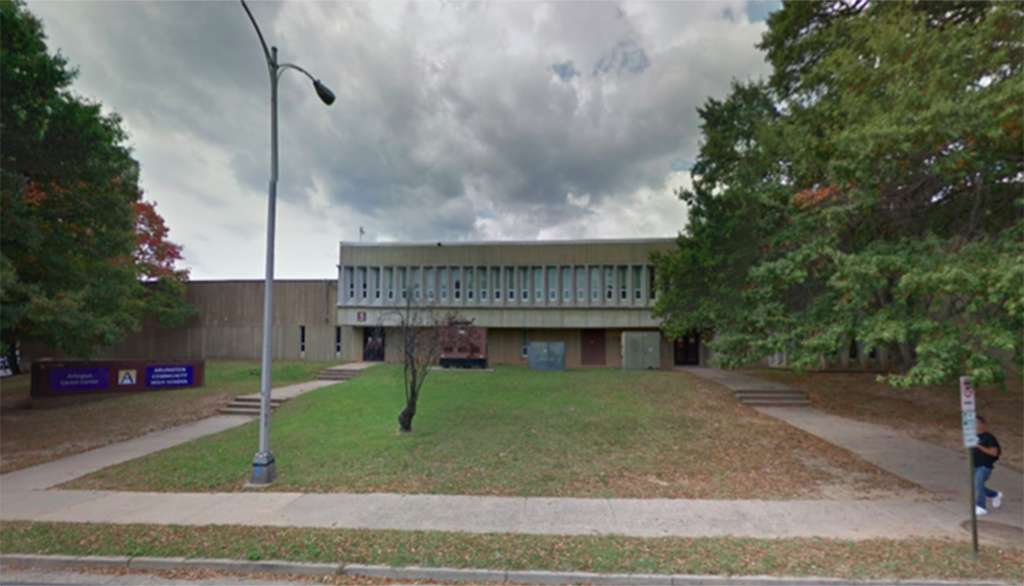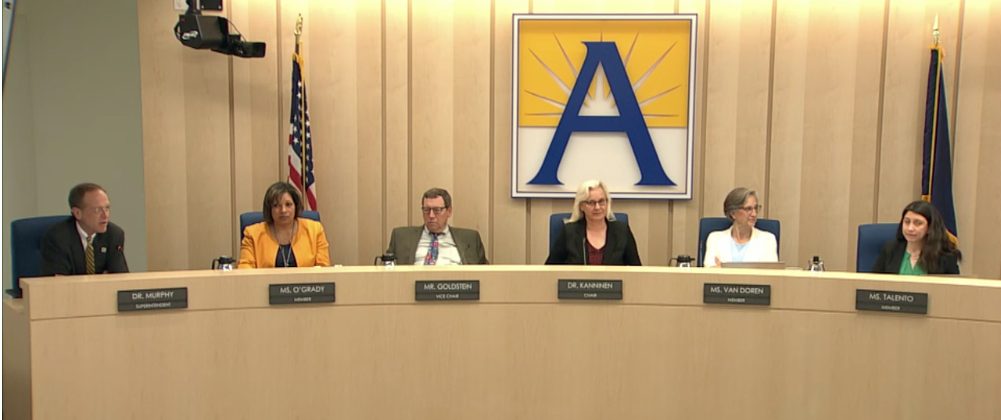(Updated at 1:45 p.m.) The Arlington School Board is nearing consensus on a plan to build 1,050 new seats for high schoolers at the county’s Career Center by 2024, with some, but not all, of the features community members want to see at the site.
At a May 22 work session, the Board expressed broad agreement on changes to Superintendent Patrick Murphy’s proposed 10-year construction plan, known as the capital improvement plan. School leaders have yet to finalize these decisions, but Board members signaled an increased willingness to embrace a plan that costs roughly $64 million more than the one Murphy proposed.
The Board has spent the last few weeks grappling with how, exactly, they’d execute a plan members agreed to last summer calling for Arlington Public Schools to add more capacity yet avoid building a fourth comprehensive high school, by adding seats to the Career Center (816 S. Walter Reed Drive) and the “Education Center” site adjacent to Washington-Lee High School (1426 N. Quincy Street).
Murphy originally suggested that APS add space for 600 high school students at the Education Center site and 250 at the Career Center by 2021, then tack on 800 more seats at the Career Center in 2026. That construction would also involve the addition of a multi-use gym and “black box” performing arts theater at the Career Center, but would not include the addition of other amenities parents in the area have been demanding.
The Board was previously considering more ambitious plans to outfit the Career Center site with a full complement of athletic fields and performing arts space. But the increased cost of those options, when combined with how the spending would strain APS’ capacity for taking on debt, seems to be scaring off Board members.
“I wanted to know how we could fast track seats and get all the amenities,” said Board member Monique O’Grady. “I think it’s clear that would put us in a situation where it wasn’t affordable.”
The Board is moving closer to embracing a plan that would bump up the construction of 800 additional seats at the Career Center to 2024, but also calls for the addition of a performing arts wing, a synthetic athletic field and a parking garage to the site.
“It’s very important that we add seats, but also that our seats be high quality,” said Board Chair Barbara Kanninen. “This would be what almost all of our high school students want to see in their school day.”
The Career Center would still not include every possible amenity the community might want to see, like a swimming pool or additional athletic fields, a point the Board repeatedly acknowledged. But Kanninen stressed that students at other county high schools have to travel elsewhere to participate in some sports or specialty classes, and she does not feel that building the Career Center school without those amenities would be inequitable for South Arlington residents.
“When we make a promise that we’re providing a quality high school experience, do we make the promise that the opportunity is within a certain distance of their school?” Kanninen said. “Because that’s what we’re hearing from the community, and that’s not the case at our schools… I think we need to have that conversation with the community, and I don’t think we have had it.”
The plan still comes with plenty of its own fiscal challenges, even if it’s not as ambitious as other options the Board considered. Board member Nancy Van Doren suggested that only building a field at the Career Center site and leasing parking elsewhere — instead of building a whole new garage — could help keep costs down.
Other members focused on yet another challenging question for the Board to decide: should the Career Center be a neighborhood school, drawing primarily from the surrounding area, or an option school open to students across the county?
Leaders of the Arlington Heights Civic Association have argued that making the Career Center a neighborhood school without it containing a full set of amenities would represent a fundamental disadvantage for students in the area, and some members tended to agree.
“If we acknowledge we can’t do equitable neighborhood seats there because we can’t provide all the features when the school opens, that pushes it into choice programs,” said Vice Chair Reid Goldstein “But, of course, that requires more buses.”
Kanninen stressed that the Board does not have to decide on that particular question just yet, and there are other options available.
“I don’t want a site that’s neighborhood without amenities, but I don’t want something that’s all option as well,” O’Grady said.
The Board is set to adopt its final CIP on June 21. Members will also meet with the County Board in the meantime to see if the county can offer additional construction funding, though County Manager Mark Schwartz has warned that such a prospect currently seems unlikely.




